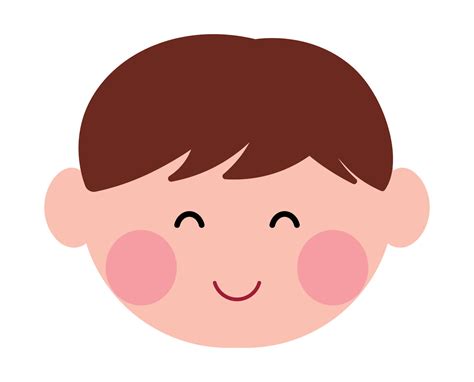The Original Pug: A Comprehensive Guide to the Beloved Flat-Faced Companion
Introduction
The original pug, also known as the Chinese pug, is an ancient breed with a distinctive appearance and a personality that has charmed millions worldwide. With its wrinkled face, bulging eyes, and compact body, the pug is instantly recognizable and adored for its loyalty, affection, and playful nature.
History of the Pug
The exact origins of the pug are shrouded in mystery, but archaeological evidence suggests that they originated in ancient China as early as the 7th century BC. They were highly prized by the Chinese imperial family and were often depicted in paintings and sculptures.
In the 16th century, pugs were brought to Europe by traders and quickly gained popularity among the nobility and wealthy. The breed became particularly popular in England and Holland, where they were favored as companion dogs.

Physical Characteristics
-
Head: Large, round, with a prominent forehead and wrinkles
-
Eyes: Large, dark, and bulging, with a distinctive "doe-eyed" expression
-
Nose: Short and black, with a pronounced bridge
-
Ears: Small, thin, and V-shaped, hanging close to the head
-
Body: Compact and sturdy, with a short back and broad chest
-
Legs: Short and muscular
-
Tail: Curled tightly over the back
-
Coat: Short, double-coated, and comes in a variety of colors, including fawn, black, silver, and apricot
Temperament and Personality
The pug is known for its charming and affectionate personality. They are highly social and love to be around people and other dogs. Pugs are also playful and curious, and they enjoy spending time exploring their surroundings.

Key Characteristics:
- Loyal and affectionate
- Playful and curious
- Good-natured and outgoing
- Gentle and patient
Health and Care
Lifespan: 12-15 years

Common Health Issues:
-
Eye problems: Brachycephalic syndrome, cataracts
-
Skin problems: Dermatitis, allergies
-
Respiratory problems: Snoring, wheezing
-
Dental problems: Overcrowded teeth
Care:
-
Regular brushing: To maintain a healthy coat
-
Frequent bathing: To prevent skin problems
-
Eye cleaning: To remove debris from the wrinkles
-
Dental care: To prevent dental problems
-
Regular exercise: To maintain a healthy weight and prevent obesity
Training and Enrichment
Pugs are intelligent and eager to please, but they can also be stubborn at times. Patience and positive reinforcement are key when training a pug.
Tips for Training:
-
Start early: Begin training as soon as you bring your pug home.
-
Use positive reinforcement: Reward your pug with treats or praise for good behavior.
-
Keep training sessions short: Pugs have short attention spans, so keep training sessions to 10-15 minutes.
-
Be patient: Pugs can be stubborn, so don't get discouraged if they don't learn something right away.
Enrichment:
-
Interactive toys: Puzzle toys, treat dispensers, and chew toys can help keep your pug mentally stimulated.
-
Hide-and-seek games: Pugs love to play hide-and-seek, which can provide both mental and physical exercise.
-
Socialization: Make sure your pug gets plenty of opportunities to socialize with other dogs and people.
Choosing and Caring for a Pug
Choosing a Pug:

- Research different breeders and meet the puppies before choosing one.
- Look for a healthy and well-socialized puppy.
- Get the puppy's medical history and ask about any genetic concerns.
Caring for a Pug:
- Provide your pug with plenty of food, water, and shelter.
- Take your pug for regular veterinary checkups and vaccinations.
- Groom your pug regularly to maintain a healthy coat and skin.
- Exercise your pug regularly to keep them healthy and happy.
Conclusion
The pug is a unique and charming breed that has captured the hearts of millions worldwide. With its distinctive appearance, affectionate personality, and playful nature, the pug is the perfect companion for anyone looking for a loyal and loving dog. By following the tips and advice outlined in this guide, you can provide your pug with a long, healthy, and happy life.
Tables
Table 1: Health Concerns of Pugs
| Health Concern |
Description |
Prevalence |
| Brachycephalic syndrome |
Difficulty breathing, snoring, wheezing |
High |
| Cataracts |
Clouding of the lens |
Moderate |
| Dermatitis |
Skin inflammation |
Moderate |
| Allergies |
Sensitivity to certain substances |
Moderate |
| Dental problems |
Overcrowded teeth, gum disease |
High |
Table 2: Enrichment Activities for Pugs
| Activity |
Description |
Benefits |
| Puzzle toys |
Toys that require mental effort to solve |
Stimulates the mind |
| Treat dispensers |
Toys that release treats when played with |
Provides mental and physical stimulation |
| Hide-and-seek games |
Games where the pug hides and the owner seeks |
Provides mental and physical exercise |
| Socialization |
Interacting with other dogs and people |
Prevents boredom and anxiety |
Table 3: Training Tips for Pugs
| Tip |
Description |
Benefits |
| Start early |
Begin training as soon as you bring your pug home |
Establishes good habits from the start |
| Use positive reinforcement |
Reward your pug with treats or praise for good behavior |
Encourages desired behaviors |
| Keep training sessions short |
Pugs have short attention spans, so keep training sessions to 10-15 minutes |
Maintains focus and motivation |
| Be patient |
Pugs can be stubborn, so don't get discouraged if they don't learn something right away |
Builds trust and a strong bond |
